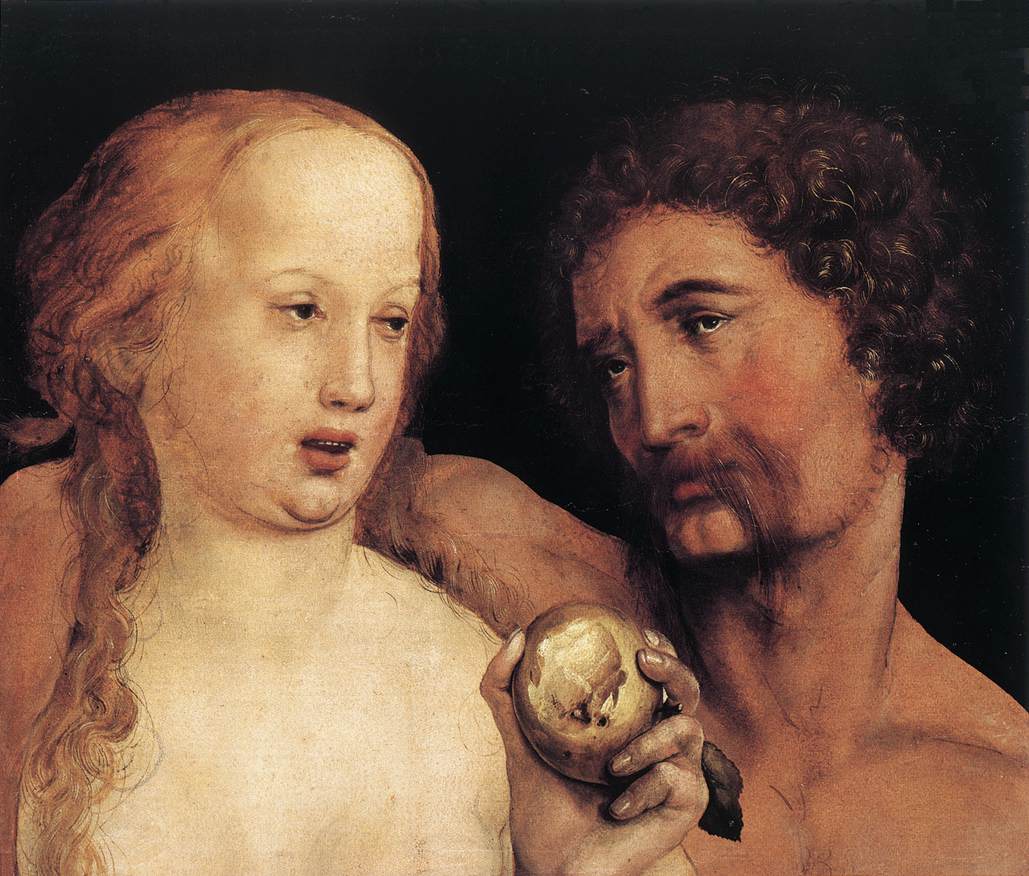Adam and Eve by Hans Holbein the Younger, Genesis 3:1-13, Bible.Gallery
Artwork Description

By 1515 Hans Holbein and his elder brother Ambrosius had left Augsburg to establish themselves in Basel and were travelling to nearby towns like Lucerne to carry out commissions, often in journeymen teams. Their father, Hans the Elder, was also involved in such projects.
Though no prodigy (he was nearly twenty when this work was done) Hans shows how he has already assimilated the contemporary `Swiss' style in the unidealised, thinly-painted figures, whose faces abound with pentimenti - such corrections can be seen around Adam's eyes. The strongly linear nature of his art is already evident in the fluid, abstracted line of Adam's shoulder. This is memorably combined with the telling realism of the worm-eaten apple Eve holds up to view. Such attention to transitory and corrupt nature (exemplified by Adam and Eve) was a frequent concern of artists in the German schools - Dürer, Hans Baldung Grien and Grünewald. The emotional tone, of regret and world-weariness, is established with considerable subtlety in the faces of the transgressing couple, without the melodrama of much contemporary work, and presages the mature Holbein's psychological insight.
Adam and Eve are painted as busts and are set against a flat black background. This choice of representation is reminiscent of half length portraits, especially as the features of the first human couple are scarcely idealized and therefore seem more portrait-like. This is Holbein's way of individualizing the subject of the Fall of Man. The painting cannot have served as a devotional picture, since Adam and Eve were not saints and could not be invoked as intercessors. The picture must therefore have been intended for private religious meditation.